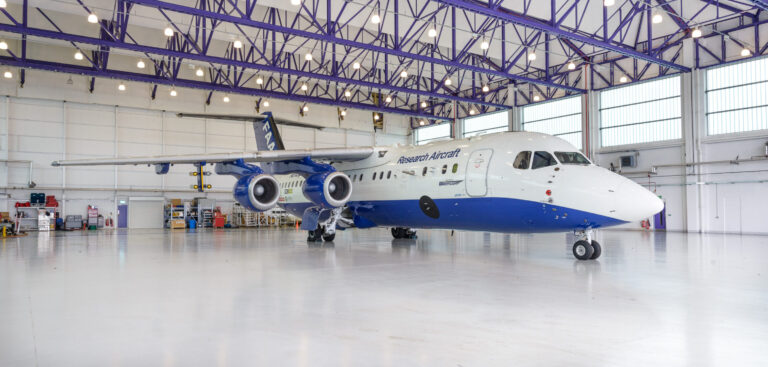The FAAM Airborne Laboratory in the UK has used a blend of sustainable aviation fuel for the first time on a routine crew training flight in the south of England.
Made from renewable waste, biofuels and residual raw materials such as recovered cooking oil, sustainable aviation fuel (SAF) can be used as a direct replacement to jet fuel sourced from crude oil, and is fully compatible with FAAM’s BAE-146 aircraft engines and fueling infrastructure.
Many airlines and major airports around the world are already using sustainable aviation fuel blends, and it has supported hundreds of thousands of flights worldwide since 2016. The demand for sustainable aviation fuel is growing rapidly, and the FAAM Airborne Laboratory, operated by the National Centre for Atmospheric Science (NCAS), will bring sustainable aviation fuel into its operations from spring 2023.
Alan Woolley, head of the FAAM Airborne Laboratory, said, “We need to reduce our carbon emissions and take quick action where we can in order to support UK Research and Innovation’s commitment to achieve net zero by 2040. The FAAM Airborne Laboratory is adopting a range of sustainable practices, beyond switching fuel type, to reduce carbon emissions while continuing to make world-class measurements of the atmosphere.
“Over the last year, we have been working with the wider NCAS team to understand the impacts we create, and gain insights into our carbon footprint. We are making progress towards phasing out avoidable lifecycle carbon emissions, not just those from the aircraft’s tailpipe, and ensuring we use clean power to supply our operations where practicable,” he said.
Alongside forthcoming plans to source sustainable aviation fuel supplies and storage for future flights from its home base at Cranfield Airport, the FAAM Airborne Laboratory will be using local solar energy and electric-powered ground power units, towing equipment, and hangar facilities.



